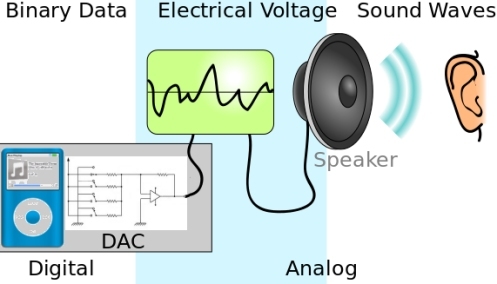Jay L. Wile's Blog, page 26
March 28, 2018
Failed Predictions of Climate Alarmists
Global Temperature over time as measured by satellites. (click for credit and source)
In 1988, the U.S. Senate’s Committee on Energy and Natural Resources held a hearing on the greenhouse effect and global climate change (transcript here, digitized version here). In that hearing, Dr. Michael Oppenheimer (atmospheric physicist and senior scientist with the Environmental Defense Fund) testified about the impending doom that were are all facing if we don’t immediately curtail our greenhouse gas emissions. He said, in part:
Certain gases which occur in the atmosphere in small amounts are growing rapidly in concentration due to human activities related to industry and agriculture. Primary among these is carbon dioxide, a product of coal, oil, and natural gas combustion. These “greenhouse gases” trap heat radiating from the surface of the earth which would normally escape into space, resulting in a warming of the surface. This increase in global temperature causes a concomitant rise in global sea level as ocean water expands and land ice melts. As long as the amounts of greenhouse gases increase in the atmosphere, this process will continue unabated. There will be no winners in this situation, only a globe full of losers. Today’s beneficiaries of change will be tomorrow’s victims as the changing climate rolls past them like a wave that first sweeps you up, then drops you in the trough behind it. The very concept of conservation does not exist in a world which may change so fast that ecosystems, which are slow to adjust, will wither and die. The technical findings of the Villach-Bellagio workshops include: Global mean temperature will likely rise at about 0.6 degrees Fahrenheit per decade and sea level at about 2.5 inches per decade over the next century. These rates are 3 to 6 times recent historical rates. (emphasis mine)
Well, this prediction was made 30 years ago. That’s about one-third of the timescale that he is discussing (“over the next century”). Nevertheless, we don’t see any hint that his predictions are coming true. Examine the image at the top of the post. It shows the latest satellite-measured global temperatures, which have been recorded since 1979. Is there any indication that rate at which global temperature is rising has increased since 1988? No. In fact, you could easily argue that the rate of global temperature increase was higher from 1988 to 1998 that it has been since 1998. There even seems to have been a “pause” in temperature increase from 2002 to 2015.
What of his prediction that the rate of sea level rise would increase? Well satellites have been measuring that for a while, too. Here is what they have seen since 1993:
[image error]
Satellite-measured sea levels since 1993. (click for source and credit)
Notice that the rate of sea level rise is 2.8 millimeters per year (1.1 inches per decade), less than half of what Dr. Oppenheimer predicted. More importantly, notice that the rate of increase has been pretty constant, despite the fact that the carbon dioxide concentration in the atmosphere rose significantly during that same time period.
Now, of course, these are relatively short time periods, so it’s always possible that there are some surprises ahead. However, given the fact that nearly one-third of the time that Dr. Oppenheimer was discussing has already passed, we can say that there are certainly no indications that his predictions have any chance of coming true.
Why am I sharing this with my readers? For two reasons. First, a scientific theory is judged by the success of its predictions. Right now, the theory that is guiding most climate alarmists has failed in its predictions (see here, here, and here). That should tell you something about its soundness. Second, the climate alarmists will continue to make dire predictions, regardless of what the data say. It is important for people to learn how wrong their previous predictions have been.
March 26, 2018
A Video Blog Entry
[image error]
My blog has been unusually silent for a while, because I went on vacation. I am back, and I plan to start blogging again, but for now, I wanted to share with you some highlights from a dive that I got to do while I was in the Dominican Republic. I hope you enjoy them!
March 5, 2018
When Hysteria is More Important than Science
This is a picture of the Maldives cabinet meeting that took place on October 17th, 2009. (click for credit)
Sea levels have been rising since the early 1800s, and while satellites have only been measuring them since 1992, satellite measurements indicate that they have been rising at a fairly constant rate of 2.8 millimeters per year. This is concerning to many people, especially the ones who live in countries like the Republic of Maldives, which is, on average, only 1.5 meters above sea level. In fact, the country is so concerned about the rising seas that in 2009, the nation’s cabinet held a meeting underwater, where they signed a document calling on all countries to reduce their carbon dioxide emissions. After all, it is thought that rising carbon dioxide levels in the atmosphere warm the planet, which in turn causes sea levels to rise. If sea levels rise too much, the Republic of Maldives will be lost.
Now, of course, that kind of reasoning makes sense, but anyone who studies science should understand that things which make sense are not necessarily true. A lot of Aristotle’s notions (such as the idea that objects prefer to stay at rest) made sense, but science has demonstrated them to be false. In the same way, a lot of our modern theories (like quantum mechanics and relativity) make little sense, but experiments strongly support their conclusions (see here and here, for example).
Rather than giving into the hysteria, then, it is best to see what the data indicate. Interestingly enough, the data say that while the idea that rising sea levels will destroy countries like the Republic of Maldives makes sense, it is almost certainly not true. I first wrote about this three years ago, when a group of researchers decided to study some of the islands around the Funafuti Atoll, which holds the island nation of Tuvalu. They found that contrary to the hysteria, the majority of the islands they studied have grown since 1897, leading to a net increase in the amount of land available. Well, the same research group has completed a more extensive study, which confirms their previous conclusion.
They have now examined all 101 islands that make up the nation of Tuvalu, and they show that overall, the island nation has gained 735,000 square meters of land during the past 40 years of sea level rise. 74% of the islands in the nation grew, while the rest shrank. This is despite the fact that the tide gauge in the area indicates that the sea level there has risen faster than the global average (3.9 millimeters per year as opposed to 2.8 millimeters per year).
Now please note that this is not because people are fighting the rising seas. As the authors note, only 11 of the 101 islands have permanent residents, and even on those islands, there are very few projects related to sea level rise. As a result, they are confident that natural processes are responsible for the growth of land area in Tuvalu. They also note:
Results challenge perceptions of island loss, showing islands are dynamic features that will persist as sites for habitation over the next century, presenting alternate opportunities for adaptation that embrace the heterogeneity of island types and their dynamics.
Based on the data, then, island nations should not be worried about being lost to the rising seas. Instead, they should learn how their islands are changing and adapt to that change.
Does this mean we should ignore rising sea levels? Of course not! We need to study them as closely as possible, so we can avoid the hysteria that is so common in the public arena. The more we focus on the data, the less important political shenanigans such as the one pictured at the top of this post will become.
March 1, 2018
My New Elementary Science Series and My New Chemistry Course Win Awards!
[image error]
I wanted to share this with my readers: Practical Homeschooling has announced that my elementary series was awarded first place in the Elementary Science category of their 2018 Reader AwardsTM. This is the second year in a row that my elementary courses were given this honor. Here is what one homeschooling parent had to say about the series:
We studied Dr. Wile’s first book, ‘Science in the Beginning’, and we loved it. But then I got a little apprehensive about the next ones, because like you say, they were written with a different approach. I tried a different curriculum, with a more traditional sequence, and we were bored! One semester was enough. Since then we have done all four books, and we started with the 5th one this school year. What we love the most is that the lessons teach ONE concept, and the experiment, like you mentioned, cements that concept. I will not look into more Science curricula ever.
In addition, my new high school chemistry course was given the same honor! The course has been available for less than three years, and I am thrilled that it has already become popular enough to win over the readers of Practical Homeschooling. Of course, no honor can be as thrilling as receiving these kinds of emails from students:
Hi! I just wanted to let you know how much I have enjoyed Discovering Design With Chemistry. I am a tenth-grade homeschooled student, and I really learned so much through this book. After taking this course, I know I will definitely take Advanced Chemistry in my senior year, and I will seriously consider studying chemistry in college as well. I found chemistry to be enjoyable and exciting through your work! Thank you!
If you are wondering how my new chemistry course differs from Apologia’s current chemistry course, you might want to read this comparison from a homeschooled student and her mother.
I want to thank Practical Homeschooling and its readers for these honors. I am happy to know that my courses are making home science education easier and more enjoyable!
February 26, 2018
Possible Physical Evidence of the Prophet Isaiah
King Hezekiah on his sickbed, as described in 2 Kings 20:1-11 (click for credit)
In 2 Kings 18-20, Isaiah 36-39, and 2 Chronicles 29-32, the Bible discusses the reign of King Hezekiah, who had several interactions with the prophet Isaiah. For example, the woodcutting shown above depicts 2 Kings 20:1-11. The king is dying, but the Lord hears his prayer and Isaiah tells him he will be healed. The King asks for a sign, and Isaiah causes a shadow to move in the direction opposite of the direction the sun would make it move.
Several extraBiblical references to King Hezekiah have been found, including a bulla (clay seal impression) bearing the phrase, “Belonging to Hezekiah, (son of) Ahaz, king of Judah.” However, there are no known extraBiblical references to the prophet Isaiah, at least not until now. While it is by no means certain, there is good archaeological evidence that a bulla from the prophet Isaiah has been found in the same area.
As discussed in Biblical Archaeology Review, Eilat Mazar (who also discovered King Hezekiah’s bulla) reports finding several other bullae in the same excavation. One bulla, found only 10 feet from King Hezekiah’s bulla, might very well belong to the prophet Isaiah. As Mazar writes:
Alongside the bullae of Hezekiah and the Bes family, 22 additional bullae with Hebrew names were found. Among these is the bulla of “Yesha‘yah[u] Nvy[?].” The obvious initial translation, as surprising as it might seem, suggests that this belonged to the prophet Isaiah.
It would make sense to find a bulla from Isaiah in the same excavation as bullae from King Hezekiah, but the conclusion is not ironclad. The name is pretty clear, but the last part, “Nvy[?],” is not. According to Mazar, the last part should signify the word “prophet,” but only if there is an aleph (’) at the end (where she put “[?]”). As she says:
Whether or not the aleph was added at the end of the lower register is speculative, as meticulous examinations of that damaged part of the bulla could not identify any remnants of additional letters.
So this bulla might just belong to a person named Isaiah who was not a prophet. However, given the archaeological context of the find, as well as the damaged nature of the artifact, there is at least a strong possibility that it represents the first extraBiblical evidence for the prophet Isaiah.
February 19, 2018
Facts and Truth

Me as Don Quixote in Man of La Mancha.
This past weekend I did something I have been dreaming about for more than 30 years. I portrayed the lead role in the classic musical Man of LaMancha. It was a wonderful experience. The cast was incredibly talented, and the production was both unique and beautiful. All the performances were sold out, and the audiences truly enjoyed the experience. I cannot express how thankful I am to The Alley Theatre for its support and its love of the arts.As any serious art should do, the musical tackles a big question: How should we approach the world in which we live? On one side, there is the character Dr. Sanson Carassco, who says that we must face the world as it is. On the other side, there is Don Quixote, who says we should face the world as it ought to be. For example, Don Quixote meets a prostitute named Aldonza. However, he sees and treats her as a virtuous lady he calls “Dulcinea.”
In his insightful program notes, our director said this:
The simple, deconstructed storyline of LAMANCHA can be imagined as DON QUIXOTE standing at one end of a line. He is the dreamer and the crusader for change. On the other end of the line is DR. CARASSCO, the representative of “things as they are.” Walking from one to the other, in journey we should all take, is ALDONZA. She begins as “who she is” and ends as “who she should be and could be.”
While these notes give you the “big picture” about the show’s message, I want to discuss a side issue that centers around one of my favorite lines. When I first started rehearsing, I said the line one way, but our ever-patient director encouraged me to re-examine how Don Quixote would actually say it, and I ended up changing the delivery significantly.
At one point in the show, Dr. Sanson Carassco confronts Don Quixote with what he thinks is the truth. There are no giants, no kings who lie under enchantment, no chivalry, and no knights. There have been no knights for a long time. Don Quixote says that Dr. Carassco is learned, but misinformed. Dr. Carassco then informs Don Quixote that he is stating FACTS. Don Quixote replies:
Facts are the enemy of truth.
Now you might think that’s an odd thing for a person to say, especially when that person is a scientist in real life. Indeed, in his program notes, the director also wrote:
And I have to say the irony is not lost on me that Dr. Jay Wile, a scientist who lives and breathes FACTS, is the most passionate about telling this story of DON QUIXOTE.
I don’t find this ironic at all, because as a scientist, I have seen how “THE FACTS” often work against the truth. Consider, for example, the case of Dr. Dan Shechtman. He discovered a type of crystal that “THE FACTS” said couldn’t exist. He suffered a lot of ridicule from those who were advocating for “THE FACTS,” but in the end, Dr. Shechtman turned out to be the one advocating for truth. The history of science is filled with people who claimed that “THE FACTS” were on their side, but eventually, their side was shown to be the enemy of truth.
Unfortunately, in this day and age, people don’t understand that when it comes to science, “THE FACTS” often change. As a result, they passionately advocate for “THE FACTS,” often by trying to silence those who argue against them. What these people fail to realize is that in science, “THE FACTS” can be the enemy of truth. I guarantee you that some of “THE FACTS” of science that we believe today will be shown to be wrong in a few generations.
A good scientist understands that “THE FACTS” of science are often quite tentative, and those who are unwilling to question “THE FACTS” might one day find that they are the enemies of truth!
February 12, 2018
Physicist and Homeschooling Pioneer Will be Speaking at Two Homeschooling Conferences

Dr. Helen Jackson, who will be speaking at two of the Great Homeschool Conventions this year.
Suppose you are systems engineer at NASA. Successfully getting to this point, you meet and marry a wonderful man and eventually have two more children (after escaping a previous marriage plagued with domestic abuse). You continue in your career while you and your spouse raise your children. The older children have already started school. However, suppose one of your children isn’t getting what he should from his education. You switch from public school to a Christian school, but it makes no difference. What do you do then?When Helen Jackson was faced with this problem, she prayed about it and was led to quit her job at NASA and homeschool her children full time. While she “put her career on hold” to educate her children, she didn’t end it altogether. As the children got older, she started doing some part-time programming work and other forms of work like consulting. From there she phased back into engineering work. Once all the children had completed high school, eventually, after a few twists and turns, she got her Ph.D. from the Air Force Institute of Technology.
Nowadays, she is a research physicist for Battelle, a science and technology research company. She is currently developing software that can interpret X-ray images to look for objects that might represent a security threat. This line of research is possible because of the work of her late husband, who co-invented the X-ray spectrometer, which is a cornerstone in so much of imaging technology.
I had the privilege of interviewing Dr. Jackson a few days ago, because she will be speaking at the Midwest Homeschool Convention and the California Homeschool Convention this year. I found her warm, engaging, exceedingly intelligent, and most importantly, profoundly wise. I learned a lot from the interview, and if you are able to attend, I strongly encourage you to go to one of the conventions and listen to her talks.
Dr. Jackson’s homeschooling story starts out with sacrifice. When she made the decision to homeschool her children, she had an excellent position at NASA. As an African-American woman, she was someone who the organization highlighted. People would come and take pictures of her, and at the time, she just thought it was part of the job. In reality, it was part of an effort by NASA (who was proud of having diversity in their scientific/ technical staff) to highlight that when you are talented, you can become an important part of the organization, regardless of race or gender.
She obviously had a bright future at NASA, but she put it all aside because her children needed something different from traditional schools. At the time, the older of her two sons was in sixth grade but scoring at the third-grade level on standardized tests. Her daughter (who was in seventh grade) was developing a bad attitude that was being reinforced by her peers in school. When she decided that the best option was to homeschool all her children, many of her colleagues in her circle, as well as family members, said it was a dumb thing to do.
I would have to agree that from a career standpoint alone, it was a dumb thing to do. Dr. Jackson was obviously a “rising star” at NASA. She probably could have moved quickly through the ranks and made a name for herself there. In addition to overcoming so many hurdles in her personal life, think about all the time and effort she spent in education and training! I asked her if she had thought that she might be wasting all her training and talent by staying home full time and educating her children. She said:
It never even crossed my mind.
Of course it didn’t. Dr. Jackson is a mother, and a mother puts the needs of her children above her own. Not surprisingly, her children’s academic improvement was swift when they started homeschooling. Why? As Dr. Jackson told me:
Homeschooling is a tutorial, which is the best form of education.
Today, her children are grown and quite successful. The son that was once underperforming three grade levels below his age now has an advanced technical degree. Her oldest child is a professor of epidemiology with over 30 publications. She has 3 masters degrees and a PhD. Her youngest daughter has a VP role in a nonprofit, with a specialized MBA. Her others sons: (1) owns a construction company which he started after graduating in chemical engineering, and (2) the youngest is a combat veteran Marine and a financial analyst consultant, with a masters degree in economics.
Of course, Dr. Jackson and her children had a lot of interesting experiences between the time they started homeschooling and the time the children went on to pursue their adult lives. They started homeschooling in Texas, when it technically wasn’t legal for them to homeschool. In the end, however, Dr. Jackson was a witness in Leeper vs. Arlington, the Texas court case that led to the legalization of homeschooling in that state. She said that the opponents of homeschooling were trying to characterize homeschooling parents as backwards and uneducated. As an expert witness, she helped to convince the court that this just wasn’t true. She also highlighted her children’s academic progress in homeschooling.
When the family moved to Pennsylvania, they found that it was hostile to homeschooling as well. At one point, the state even issued a warrant to have her children taken into custody because of “neglect,” which was a common charge levied against homeschoolers, because their children were not enrolled in a traditional school. She ended up testifying before the Pennsylvania House Subcommittee on Education, on behalf of a court case regarding the legality of homeschooling.
In other words, Dr. Jackson is a homeschooling pioneer. She not only started doing it before it was legal, but she helped to make it legal in at least two states. In the process, she and her family lost homes and livelihoods in two states, not something easy to recover from. It’s not surprising, then, that one of the messages she wants to share at the homeschool conventions is:
Don’t forget that someone had to make it legal for you.
Homeschooling is so common these days that it’s easy to forget this important point. It’s also easy to ignore the corollary: That it could become illegal at some point in the future, if homeschoolers do not remain vigilant.
There is so much that I could write about Dr. Jackson, but this article is already getting too long. I encourage you to hear the rest from Dr. Jackson herself. I guarantee that you will not be disappointed.
February 5, 2018
Human Technology is Garbage Compared to Biology

The main printed circuit board from a Hewlett-Packard HP9000 Model 715 UNIX Workstation. (click for credit)
Look at the picture above. It is the motherboard (the main printed circuit board) from a computer. How do you think it came to be? It could have been formed by an earthquake at a spare electronics warehouse. After all, it’s at least possible that in the midst of the warehouse shaking and being destroyed, lots of spare electronic parts started crashing into each other and, as a result, just happened to produce what you see above. Of course, I hope that no one is silly enough to believe such a story. It is obvious that the motherboard is the result of careful design and craftsmanship.
An example of the computer I used in the late 1980s. (click for credit)
As someone who started programming computers with punch cards, used DOE grant money to buy a 40-Megabyte hard disc for $1,200 in 1989, and stored his unimaginably vast (800 Megabytes) thesis experiment data on sixteen separate 10.5-inch magnetic tape reels, I have witnessed a lot of progress in the area of computers. I marvel at how technology can produce a hand-held device that is more powerful than the VAX-11/750 (pictured on the left, without the keyboard and monitor) that I used to analyze my thesis experiment. Nevertheless, with all of the amazing progress that human engineering has produced, it doesn’t come close to what we see in the natural world.Consider, for example, this article’s comparison of a personal computer to a mouse brain:
A personal computer simulates a mouse-scale cortex model (2.5×106 neurons) 9000 times slower than a real mouse brain operates, while using 40,000 times more power (400 W versus 10 mW). [reference marks omitted for clarity]
In case you don’t understand the lingo, 2.5×106 is 2.5 million, and neurons are the cells that carry out brain-related functions. There are other support cells in the brain, but the neurons are the brain’s “workhorses.” So a mouse brain has about 2.5 million operational cells, which is close to the complexity of a personal computer. However, the mouse brain operates 9,000 times faster than the computer, and it is 40,000 times more efficient when it comes to energy usage!
Imagine deciding to use a computer that is 9,000 times slower than the computer you use now and consumes 40,000 times as much power. What would you think? You would think it’s a piece of garbage, right? Compared to a mouse brain, one of humankind’s major technological achievements is like garbage! Of course, if you compare technology to the human brain, it gets much, much worse. The same paper indicates:
Simulating a human-scale cortex model (2×1010 neurons), the Human Brain Project’s goal, is projected to require an exascale supercomputer (1018 flops) and as much power as a quarter-million households(0.5 GW). [reference marks omitted for clarity]
Once again, to decode the lingo, you need to know that “flops” is a measure of computer speed, and 1018 is a 1 followed by 18 zeroes. Currently, the fastest supercomputer clocks in at about 1017 flops, so at this point, we can’t even build a computer that could be compared to the human brain. Our computers need to become 10 times faster to even start such a project.
In addition, look at the power required: 0.5 Gigawatts, which is 500 million watts. Guess how much power the human brain requires? About 12 Watts. So even if we could build a computer that at least has the human brain’s level of complexity, it would require about 42,000,000 times as much power as the brain. Of course, with all that, it would almost certainly be much slower than the brain.
Some scientists would have you believe that random mutations filtered by natural selection produced biological technology that makes our best human technology seem like garbage. Not this scientist!
January 29, 2018
Where Did Western Philosophy Begin?

Artist Frank Wu’s interpretation of Job 1:20-21. (click to go to the artist’s website)
In my sophomore year at university, my roommate was Frank Wu. He was a fun, energetic guy, and we had a great time together. We remained friends throughout our time at university. I got married after my junior year, and Frank gave me and my wife an original painting, which is pictured above. It represents his artistic interpretation of my favorite passage in Scripture: Job 1:20-21. I have treasured the painting ever since he gave it to us. It hangs in my office where I can see it while I work. Now that he is an award-winning artist, it is probably worth some money, but that couldn’t possibly compare to the value it holds in my heart.
Because the book of Job contains my favorite passage in Scripture, I have probably read it more than any other book in the Bible, along with many commentaries. Imagine my surprise, then, when I came across an interpretation of the book that I had never considered. It comes from Dr. Susan Neiman, director of the Einstein Forum in Potsdam, Germany.
Dr. Neiman says this about the book of Job:
I am a philosopher who believes that Western philosophy begins not with Plato, but elsewhere, and earlier, with the Book of Job. That is because I believe that the problem of evil is the central point where philosophy begins, and threatens to stop.
The problem of evil, of course, is the apparently contradictory situation in which God is all-good and all-powerful, but there is suffering in the world. How could an all-good, all-powerful God allow that to happen? For centuries, Christians have written excellent answers to that question, so I don’t consider it a problem. See, for example, Chapter 14 in Warranted Christian Belief by Dr. Alvin Plantinga. However, it is a good question that every person who believes in an all-good, all-powerful God must consider.
Thus, I encourage you to read Dr. Neiman’s essay when you have time to consider it. I don’t agree with everything she says, especially when it comes to God’s omnipotence. However, the way she describes the roles of Job, his friends, and God is very interesting. I will spend more time considering her interpretation and perhaps write a follow-up article.
January 25, 2018
Cells Have Digital-to-Analog Converters

A schematic representation of the digital-to-analog conversion process.
(click to see credit for unedited image)
Suppose you want to listen to some music. You pull out your iPod or your phone, put the earbuds in your ears, and you start to enjoy your favorite tunes. You probably don’t think about the process that makes this possible: digital-to-analog conversion. Computers and devices based on them store all of their information digitally. On your iPod or phone, the music is stored as a string of 1’s and O’s. The 1’s represent electricity being on, and the 0’s represent electricity being off. So as your iPod or phone “plays” the music, it comes out digitally: as pulses of electricity, either on or off.
If you tried to listen to those pulses, they would make no sense to you, because your ears aren’t designed to hear things digitally. Instead, they are designed to hear sounds in a continuous flow. We call this analog. So while your iPod or phone stores music digitally, it must convert that music into a continuous, analog signal so that you can understand it. It does this with an electrical circuit called a digital-to-analog converter (DAC). Here is a picture of a simple one (click it for credit):
Obviously, the digital-to-analog converter in your phone or iPod is much more sophisticated. It produces a higher-quality analog signal, but probably more importantly, it is packed into a tiny space. That’s what really makes it sophisticated. It can do a complex job while taking up very little room.
It turns out that cells have essentially the same thing, but it is significantly more sophisticated than what you find in an iPod or phone.
Researchers at Harvard Medical School were trying to better understand how cells respond to their environment. As they note, there are many processes that help cells do this, but they concentrated on the process by which a cell knows how often to use the genes in its DNA. When a cell reads a gene, the information on that gene is copied and then sent to protein-making sites in the cell. The process of copying a gene’s information is called transcription. Well, the rate of transcription changes for each gene, depending on the needs of the cell. What determines how the transcription changes? Here’s what the authors say:
Cells must coordinate responses to many stimuli, including signalling cues from other cells, the extracellular matrix, hormones and active compounds. As they are subject to feedback control, these response pathways are usually ‘on’ or ‘off’ in nature. By contrast, transcriptional changes can be ‘dialled’ up or down and provide a composite response to multiple inputs over time. In line with this, signal transmission to chromatin can be compared to a digital-to-analogue converter (DAC) that takes ‘on’ and ‘off’ signals and converts them into a continuous output that can vary in amplitude over time. We speculate that histone tails may function in this way, acting as a site that stores signals and integrates them to regulate the transcriptional programme.
In other words, the signals that cells get to inform them about their environment are digital. However, the cell’s response is smoothly varying so the exact needs of the cell can be met. That means the cell’s response is analog. Thus, the digital signals received by the cell must be converted to analog signals that influence the cell’s response. As a result, each cell has a digital-to-analog converter! The authors suggest that this is done at specific sites on a class of proteins (histones) around which the DNA is wrapped.
Now think about that for a moment. Your iPod’s digital-to-analog converter is sophisticated, in part, because it is so small. However, on the cellular level, it’s larger and more clumsy than the digital-to-analog converter pictured above! A cell’s digital-to-analog converter is so small that DNA molecules can wrap around it!
The more I learn about nature, the more in awe I am of the One who created it!
Jay L. Wile's Blog
- Jay L. Wile's profile
- 31 followers





